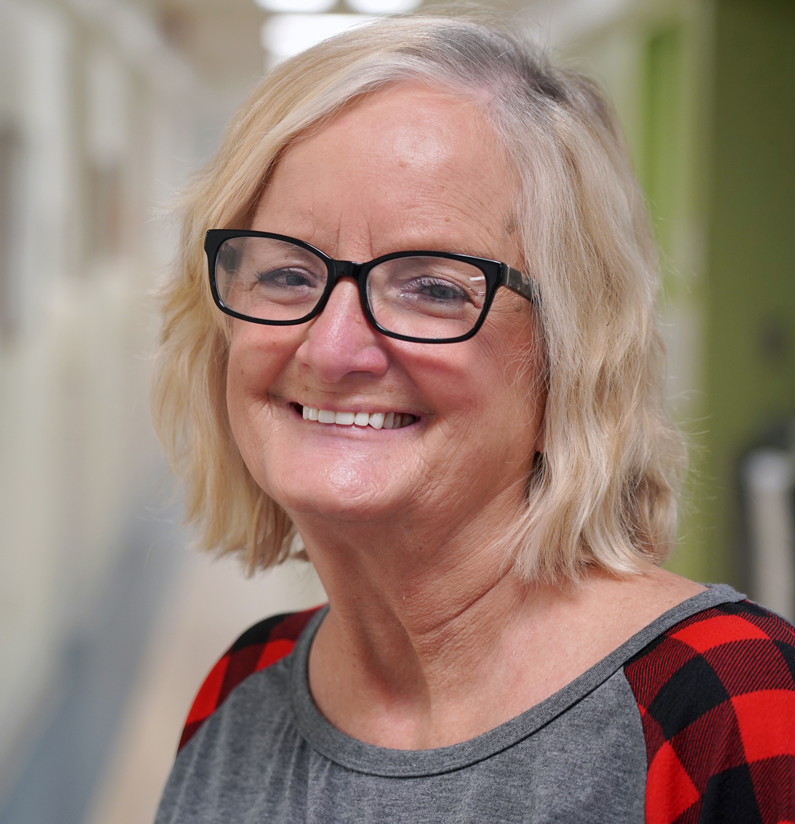Undiagnosed Diseases Program brings hope to patients with perplexing conditions
Patient talks about her decade in the UDP

Imagine visiting your doctor and having them tell you they have never seen symptoms like yours in their entire medical career. For thousands of Americans, this is their everyday reality.
The NIH Undiagnosed Diseases Program (UDP) focuses on the most challenging medical cases referred to the Clinical Center. The initiative originated in 2008 from the National Human Genome Research Institute, the NIH Office of Rare Diseases Research and the NIH Clinical Center to study previously unknown or otherwise puzzling conditions that resist diagnosis, are considered undiagnosed and some qualify for further study.
With the express goal of providing answers for patients with mysterious conditions and a general aim to learn more about these medical mysteries, UDP gathers teams of experts in many specialties from across NIH to work on these cases. Clinicians often use advanced DNA and genomic sequencing analyses to uncover clues about the illnesses.
One participant, Louise Benge, has been enrolled in the program for a full decade, making a continuing series of visit to the Clinical Center for initial evaluation, ongoing study and follow-up. She recently spoke with Clinical Center News about her experience. This interview has been edited lightly for length and clarity.
What were you experiencing that led you to the Undiagnosed Disease Program at the Clinical Center?
Benge: My legs had started bothering me while I was in my 20s – the calves of my legs became hard as rock and it was difficult to walk. I saw several specialists, and one said, "you have the legs of a 60-year old woman," - my own mother was 60 at the time and getting around better than I was. I had seen one specialist who thought surgery might be an option but then decided against it. Some doctors I saw just thought I needed to walk more!
But the family physician got really involved and referred me to the local hospital to get an ultrasound. These results alarmed the ultrasound specialist, who immediately contacted my doctor who then became even more concerned. She was the one who then contacted NIH on my behalf. I was accepted into this program along with all my sisters and brothers who were experiencing the same problem. This shared condition was of special interest to NIH.
What happened when you first arrived and NIH and what followed that initial visit?
Benge: I first went with one of my sisters. We thought we’d be there for three days but it lasted 10 days! We went through a battery of tests - it seemed like every test imaginable. There was bloodwork, various types of scans, heart testing and evaluation and more. Our return visits were set for every six months and then it went to an annual visit. We started out staying in the Clinical Center, but later moved to the Family Lodge.
What was learned through the UDP about your condition?
Benge: They suspected right away there was a genetic component in this. My parents had been told they were very distant fifth cousins, but the Undiagnosed Diseases Program found they were actually third cousins. So, we have a genetic abnormality that results in having insufficient adenosine to keep blood arteries from hardening and calcifying.
Where do things stand now with your participation in UDP?
Benge: We all still come up once a year for testing and examination as they continue to study what might decrease or halt this condition. I feel lucky to be in this program interested in following our family’s journey with this genetically-linked condition.
- Robert Burleson
Learn More
In 2012, building on the early successes of the UDP, NIH extended the program into a network of seven academic medical centers around the United States, known as the Undiagnosed Diseases Network (UDN). In 2018, the network expanded again to incorporate 12 sites around the country.
Do you know someone who might be one of the estimated 25 million Americans who suffer from a rare disorder? The UDN is currently accepting participant applications.
Learn more at the Undiagnosed Diseases Network, email UDN@hms.harvard.edu or call 1-844-RING UDN (746-4836) (toll-free from USA, Canada and Mexico) or 1-617-432-2344 from all other countries.